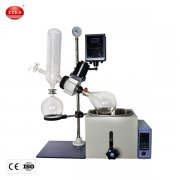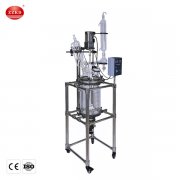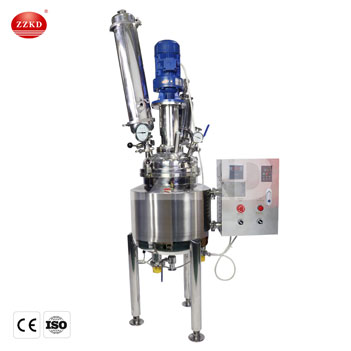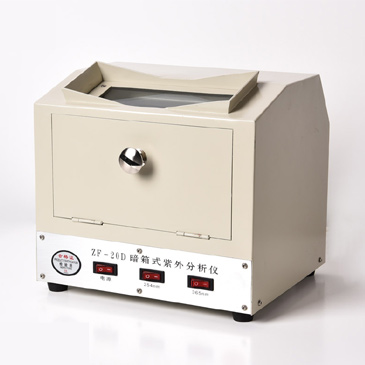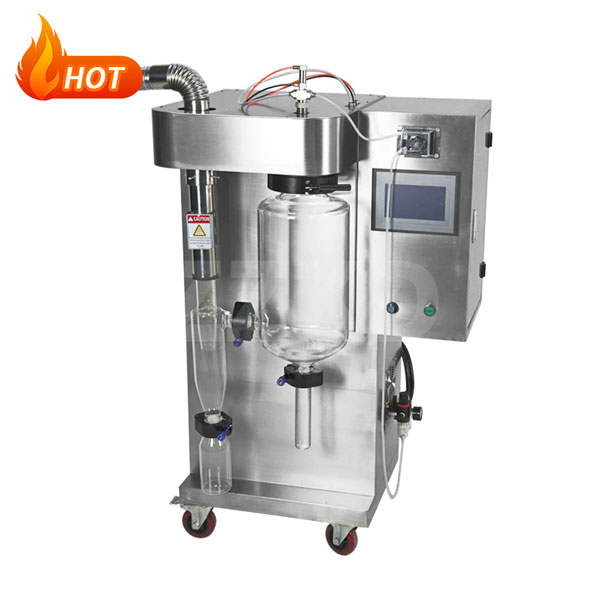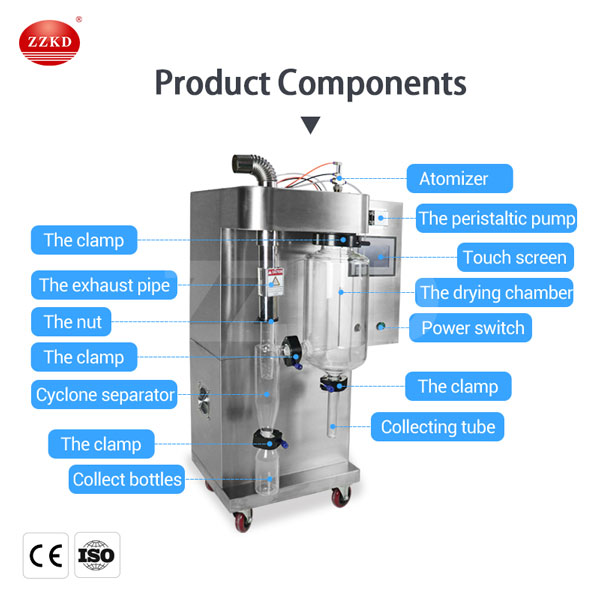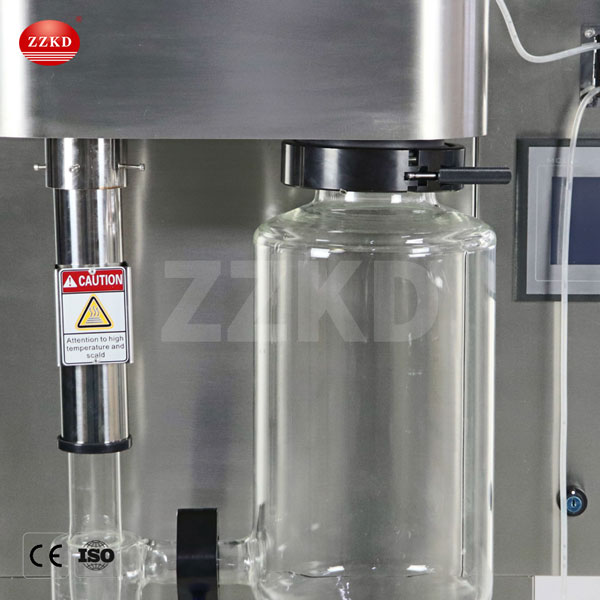Spray dryer is a new type of efficient drying process equipment. It can spray dry solutions, emulsions, pastes and heat-sensitive materials. Generally, within a few seconds, the water evaporates and turns into powdery, granular hollow spheres or round granular products that meet the production requirements. It is an ideal drying equipment for pharmaceutical, bioengineering, chemical and other industries. Below, ZZKD will analyze the specific aspect of
laboratory spray dryer price, so that everyone can buy it.
What are the determining factors of ZZKD mini spray dryer price?
The price of the spray dryer is mainly related to the specifications and models of the dryer and the materials used. Therefore, if these are not known, it is impossible to quote the product, and then it is impossible to give a specific price.
The following are the specifications of zzkd mini spray dryer for your reference.
Specifications of the Mini spray dryer:
|
Inlet air temperature: |
Room temperature to 300°C |
|
Outlet temperature: |
Room temperature to 140℃ |
|
Water evaporation capacity : |
0-2000ml/h |
|
Stainless steel nozzle: |
Nozzle diameter Φ0.75mm |
|
Display: |
7-inch LCD touch operation display |
|
Real-time temperature control: |
Error ±1℃ |
|
Real-time display temp. accuracy: |
0.1℃ |
|
Fan: |
0.75kW (aluminum alloy supercharged) |
|
Maximum drying air volume: |
105m³/h |
|
Inverter power: |
0.75kW |
|
Air compressor: |
0.55kW (oil-free) |
|
Whole machine power: |
2.2kW/4.4kW/8.8kW 220V |
|
Dimensions: |
650×500×1500mm |
Is the Mini spray dryer price related to whether it is a standard or non-standard equipment?
The price of the spray dryer has a certain relationship with whether it is a standard or non-standard equipment. However, it is mainly determined by three factors: the degree of dryness of the material, the use requirements and the configuration of the equipment.
Device Configuration:
1. Feeding method: peristaltic pump regulation.
2. Concentric nozzle atomization without deviation, caliber 1.0mm, optional 1.5mm, 2.0mm and with automatic cleaning function;
3. The PLC program is programmed into the control system and operated on the touch screen.
4. The body and frame are made of 304 stainless steel, and 316 material can be customized.
5. Using electric heating, automatic control. Temperature setting range: the air inlet temperature is 300°C, and the air outlet temperature is 140°C. The adjustment accuracy is ±1°C.
6. External air compressor, spray test pressure adjustment range 0.1-0.3Mpa.
7. Fan: adopts the induced air mode, and the recovery rate is higher.
8. The cyclone separator, the bottom collection bottle, the material collection bottle and the drying chamber are made of Gaopeng silicon glass, which is resistant to high temperature and can be made of stainless steel.
9. Exhaust gas treatment: pulse bag filter, made of stainless steel.
10. Self-contained safety protection and automatic alarm function:
① With fan protection function;
②It has the function of preventing operation errors;
Material dry bulk density:
The bulk density of the spray dryer plays a decisive role in the drying effect of the product, so determining the bulk density is a very important task. Generally, when designing a spray dryer, the bulk density should be set well. Only in this way can the product achieve a better drying effect. The bulk density of the spray dryer cannot be determined casually, and many comprehensive factors must be considered when determining it, as follows:
(1) Equipment type:
If a parallel flow spray dryer is used, a product with a higher bulk density can be obtained, so it should be selected according to actual needs.
(2) Influence of additives
If you want to obtain products with low bulk density, such as instant coffee, instant tea, certain paint powders, etc., you can add nitrogen or carbon dioxide to the dry material. But if adding inorganic salts, such as sodium chloride, it will increase the bulk density, so it should be added carefully, and it should not be added wrongly, because it may have a negative effect.
(3) Feed concentration
The feed concentration is directly proportional to the bulk density, the feed concentration is small, the bulk density is small, and the production capacity is also reduced.
(4) Hot air and exhaust air temperature
If the temperature difference between hot air and exhaust air is larger, the bulk density of the product will be lower; if the temperature difference is smaller, the bulk density will be higher. However, the temperature difference cannot be too small, because the small temperature difference requires a large amount of air, which increases the required power and heat energy, which will bring adverse effects instead, so it cannot be too small.
Key Points for Choosing a Small Spray Dryer
1. Considering your laboratory space and the amount of materials that may need to be processed, you can decide how much to buy for a small spray dryer, such as 500ML/H, 1500ml/h, 3500ml/h, 5000mI/h, 500ML./H It is generally desktop type, suitable for workbench, and other processing capacity is generally floor type;
2. Consider the main purpose of the small spray dryer, whether it is teaching or scientific research. If it is teaching, try to choose a high borosilicate glass drying room, which is beneficial for students to observe the experimental process. For scientific research, glass or stainless steel. If the process is mature, stainless steel can be considered, which is durable. If it is a variety of materials, the process needs to be adjusted, and glass parts can be considered.
3. Consider safety: if it is an organic solvent material, it must be equipped with an inert gas circulation system, which is inert, has low oxygen concentration, and the solvent can be recycled without safety risks;
4. Material selection: If it is a sugar-containing material, it is better to choose a small spray dryer that can provide low temperature, such as an inlet temperature of 110°C, so that the material will not stick to the wall; if it is ceramics and catalysts, it is better Choose a wide material of 1-100 microns, especially suitable for catalyst and ceramic industry; if it is a special heat-sensitive material such as enzyme preparation probiotics, it is recommended to choose a vacuum low-temperature spray dryer;
5. If your materials are uncertain, it is recommended to choose a small spray dryer with strong scalability. For example, you can buy a desktop spray dryer now, but this model can choose other components in the future, such as a nitrogen circulation system, to form an organic solvent spray dryer; buy a vacuum module and upgrade it to a vacuum low-temperature spray dryer, making future use particularly convenient.

 Products
Products





